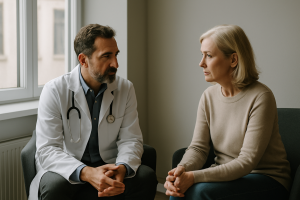A serene portrait of an older woman in natural light, symbolizing dignity and acceptance in later life.
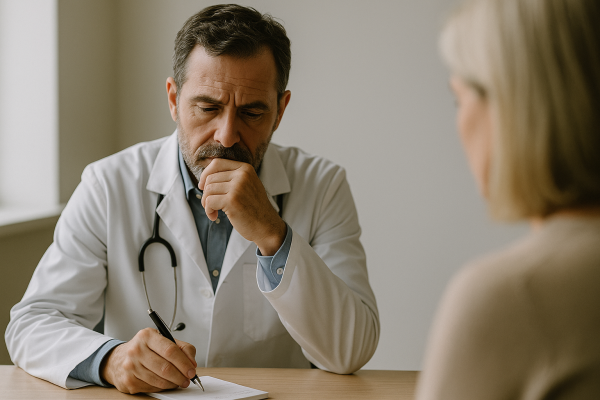
Table of Contents
- Section 1: The Paradox of Modern Medicine
- Section 2 From Humble Observation to Hyper-Intervention
- Section 3 The Wisdom of Waiting: The Biology of Self-Repair
- Section 4 When Doing Nothing Is Doing Something
- Section 5 The Hidden Costs of Over-Intervention
- Section 6 Shared Decision-Making: Who Gets to Decide When to Wait?
- Section 8 Reclaiming Medical Humility
- FAQ – When Should a Doctor Watch and Wait
- 1. When should a doctor choose to “do nothing”?
- 2. Is “doing nothing” a real medical strategy?
- 3. How does the body heal on its own?
- 4. What are the risks of over-treating?
- 5. How can patients know when to wait and when to act?
- 6. What is the role of the endocannabinoid system here?
- 7. Does aging change the decision to intervene?
- 8. Why do doctors overtreat if they know the risks?
- 9. Is “less is more” supported by research?
- 10. What can patients ask their doctor to encourage restraint?
- Miss These Internal Links?
Why restraint, humility, and patience remain the most sophisticated tools in modern medicine.
The exam room hums. A blood pressure cuff exhales. A printer coughs out another order. Somewhere in the distance, a monitor beeps its steady metronome. Medicine moves quickly now, faster than conversation, faster than comprehension.
Yet centuries before this noise, Hippocrates offered something quieter:
“Sometimes, the greatest medicine is to amuse the patient while nature cures the disease.”
It’s a line so mischievous it feels almost modern, equal parts humility and humor. But beneath the wit lies the oldest paradox in medicine: healing often happens without us.
After two decades of practicing, observing, and occasionally intervening too soon, I’ve learned that one of the hardest, and most healing, skills in clinical life isn’t deciding what to do. It’s deciding when not to.
We are trained to fix, to act, to fight illness as if it were an invader. Yet much of human physiology isn’t at war; it’s negotiating peace. “Doing nothing,” properly understood, is not neglect. It’s clinical restraint, the discipline to trust the body’s design before imposing our own.
That’s the heart of when to do less in medicine: knowing that sometimes the most sophisticated treatment plan is patience itself.
Section 1: The Paradox of Modern Medicine
When Progress Outpaces Patience
Medicine today is dazzling. We can edit genes, print organs, and predict strokes with algorithms. Our reach has never been longer; our humility, never shorter.
Each new tool promises control. Yet with control comes impatience. We no longer tolerate mystery, only measurement. A bruise that lingers or a cough that fades too slowly now feels like an administrative failure. We want proof that something is being done.
The irony is that our ancestors, armed with little more than time and touch, often understood healing more deeply. They accepted that recovery is not a straight line but a spiral; that progress sometimes hides behind stillness.
That’s why the question when to do nothing in medicine is less about hesitation and more about tempo. It asks whether we can match medicine’s velocity to the body’s pace without losing the art of listening.
The Culture of Constant Care
A patient walks in expecting a prescription, a scan, a plan. A doctor, trained to deliver value through action, feels the same expectation. “Let’s wait and see” rarely satisfies anyone, even when it’s the right call.
So the appointment becomes a performance. The doctor prescribes something, anything, just to mark motion. The patient leaves reassured that something happened, though nothing needed to. The cycle continues: more tests, more data, more dependence.
But medicine was never meant to be a contest of productivity. It was meant to be a partnership with biology. The problem isn’t our technology; it’s our compulsion to use it every time a symptom whispers instead of screams.
If restraint feels radical today, it’s only because we’ve forgotten that restraint built the foundations of medicine itself.
The Hidden Erosion of Trust
Every unnecessary intervention sends a subtle message: the body cannot be trusted. Over time, both doctor and patient begin to believe it.
The patient starts to see each ache as evidence of failure. The doctor sees each quiet recovery as luck rather than physiology. And thus the relationship that once centered on confidence dissolves into mutual doubt.
Relearning when to do nothing in medicine is how we rebuild that trust. It’s how we remind patients, and ourselves, that biology is still the world’s best healer, given the courtesy of time.
Stillness as Skill
To an untrained eye, doing nothing looks like absence. But in clinical hands, it’s precision. It’s a diagnostic decision, an ethical posture, a kind of faith that grows only through experience.
A young physician wants to act; a seasoned one wants to understand. Stillness becomes a measure of mastery, the quiet calculus of risk versus rhythm, of possibility versus probability.
Every time a doctor resists the urge to intervene, they are practicing the oldest form of care: protection. Protecting the body from overtreatment, the mind from panic, and the trust between them from erosion.
That’s the paradox of progress: the better medicine becomes at doing, the more vital it becomes to remember not doing.
In the beginning, medicine was defined by observation, the art of watching time unfold and learning its language. But that humble art has largely transformed into hyper-intervention, and what was lost in the transition.
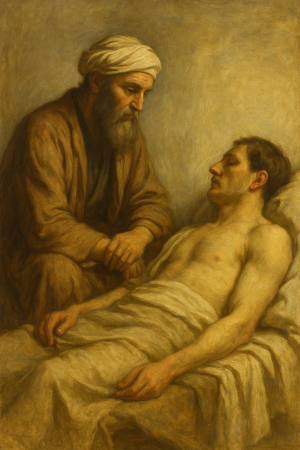
Section 2 From Humble Observation to Hyper-Intervention
The Watchful Origins
Medicine began with observation. The earliest healers spent more time listening than lecturing, more time watching than working. Their instruments were eyes, hands, and time. They measured healing by mornings survived and nights endured.
Observation wasn’t passivity, it was participation. They knew that most illness obeyed its own timeline, and that the physician’s task was to follow, not force, that rhythm. They treated nature as a senior colleague.
That humility built medicine’s foundation. A fever wasn’t instantly suppressed; it was interpreted. A cough wasn’t silenced; it was studied. The job was not to conquer the body but to converse with it.
The Industrial Turn
Then came penicillin, radiology, and surgical steel. With every invention, medicine grew louder. The stethoscope became a symbol not of listening, but of authority.
The new goal wasn’t to wait, it was to win.
And with that new goal came a quiet shift—healing became performance.
By the mid-twentieth century, hospitals resembled factories: conveyor belts of diagnostics and procedures. “Observation” became an old-fashioned word, replaced by “work-up.” Physicians were rewarded for action, not judgment. Patients, re-trained by culture, began to equate treatment with value.
The result was a quiet distortion: success became measured by activity, not by outcome. A doctor who intervened was competent; a doctor who watched was careless. It’s little wonder that restraint started to look like failure.
The Age of Data, the Death of Doubt
Today, we quantify everything, heart rates, step counts, hours slept, even “recovery time” rendered in decimals. Technology has given us omniscience, but it has stolen our tolerance for uncertainty.
Yet uncertainty is where healing lives. Without it, we react instead of reason. When every blip on a monitor triggers a reflex, the patient becomes a project, and the physician becomes a manager of numbers.
That’s the deeper question inside when to do nothing in medicine: can we rediscover curiosity in an era allergic to pause?
The Arrogance of Control
We have mistaken capability for command. Because we can measure, we believe we must modify. But control without humility becomes violence, gentle, clinical, data-driven violence. The urge to fix every fluctuation flattens the body’s natural conversation with itself.
True medical maturity is knowing the limits of mastery. The modern challenge isn’t ignorance, it’s intoxication with knowledge.
And that intoxication is costly. Every intervention, no matter how small, ripples outward. Each test changes probability; each procedure changes identity. Somewhere between intention and outcome, the line between healing and harm blurs.
Reclaiming the old patience doesn’t mean rejecting progress. It means tempering it. Machines can reveal truth, but only humans can decide when truth needs translation.
The future of medicine may depend less on discovering new treatments than on rediscovering proportion, the courage to let biology breathe before technology intervenes.
Section 3 The Wisdom of Waiting: The Biology of Self-Repair
Nature’s Default Setting
Every cell in the human body carries a blueprint for recovery. Broken bones knit. Inflamed tissue cools. Nerves regrow with microscopic patience. Healing is not a miracle we summon; it’s a process we interrupt.
To ask when to do nothing in medicine is to remember that the body, left to its own devices, rarely chooses chaos. It chooses recalibration. The physician’s task is not to accelerate that process, but to know when acceleration would distort it.
The Immune System’s Slow Intelligence
Consider the immune system, a living archive that learns, forgets, and revises. A fever is not failure; it’s strategy. Inflammation is not injury; it’s orchestration. When we rush to extinguish every symptom, we silence the body’s internal dialogue about defense and memory.
Patience is the immune system’s tutor. Antibiotics, used indiscriminately, turn that classroom into static. To practice restraint here is not neglect, it’s respect.
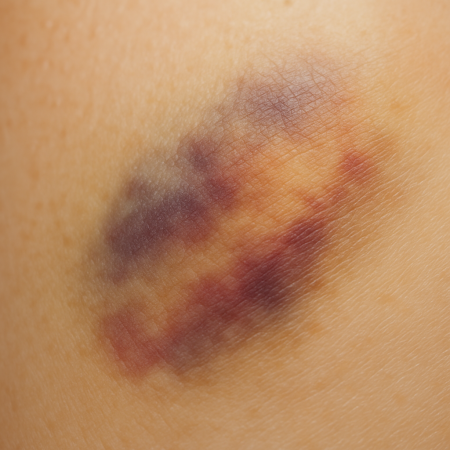
The Endocannabinoid Example
The endocannabinoid system, our molecular mediator, embodies this principle. It balances excitation with inhibition, pain with relief, hunger with satiety, inflammation with repair. Its mission is moderation.
Cannabis medicine often works not by overpowering the body, but by whispering to it, restoring homeostasis rather than rewriting code. That’s a modern illustration of doing nothing dramatically: supporting balance without forcing outcome.
For anyone curious about this quiet regulator, I’ve written more here:
👉 https://doctorapprovedcannabis.substack.com/p/modernizing-medicine-why-medicare
Pain as Information, Not Emergency
Pain isn’t always a command to act; sometimes it’s an invitation to notice. A sore back after gardening, a tendon that protests new shoes, these are lessons, not alarms. Yet in a medical culture that monetizes certainty, discomfort has become intolerable.
The wisdom lies in being able to distinguish signal from noise. If the pain teaches without disabling, the right prescription may be posture, patience, or perspective. Not every signal deserves a siren.
The Patience Paradox
The deeper you study biology, the more it teaches delay. Tissues regenerate on timelines that make human schedules laughable. Collagen doesn’t care about calendars. White blood cells don’t multitask.
That’s the paradox of when to do nothing in medicine: the slower we go, the faster we often heal. Each day of patience lets physiology do its invisible work, unhurried and precise.
Doing nothing, then, isn’t idleness, it’s choreography. It’s the science of allowing.
Section 4 When Doing Nothing Is Doing Something
The Discipline of Delay
“Doing nothing” sounds like surrender. But in medicine, it can be the most deliberate act of all. Every experienced clinician eventually learns that the decision not to intervene is never a default, it’s a diagnosis.
When we talk about when to do nothing in medicine, we’re not talking about ignoring illness. We’re talking about acknowledging biology. We’re talking about the small, precise discipline of letting the body lead.
In practice, this means choosing stillness not out of fear, but out of proportion. It means remembering that most of the body’s systems are older, smarter, and better rehearsed than we are.
To wait, then, is not weakness, it’s reverence.
The Foot That Simply Hurts
A patient comes in with a plantar wart that’s been there for years. It doesn’t grow, doesn’t spread, doesn’t limit walking. It’s simply… there.
Could it be treated? Of course. There are chemical peels, cryotherapy, laser ablations, all effective. But effective for what? For removing an irritation that the body and the mind have already learned to coexist with.
In cases like this, the intervention solves a cosmetic inconvenience by introducing real risk, pain, infection, or recurrence. Sometimes the better medicine is the one that protects a patient from unnecessary victory.
The question isn’t can we remove it? It’s why should we?
That’s the quiet logic inside when to do nothing in medicine: if it doesn’t hinder your life, maybe it doesn’t need to leave it.
The Bones That Complain
Another patient: mid-forties, active, walks a lot. Recently, the outer bones of their feet ache after long days. Tight shoes. Longer commutes. No trauma, no swelling, just discomfort.
The modern reflex? A referral to podiatry, imaging, orthotics, maybe surgery. But what if the simplest solution is also the truest one? New shoes, gentler routines, or rest.
Medicine often acts like a mechanic’s shop, find the noise, replace the part. But bodies are not machines. They’re ecosystems. A change in one area ripples through the whole. Fixing the noise can disturb the harmony.
Sometimes, the smartest fix is no fix at all.
When Doctors Wait, and When Patients Do
The decision when to do nothing in medicine doesn’t always belong to the doctor. Sometimes it belongs to the patient.
Doctors know disease; patients know themselves. They know the exact flavor of their discomfort, the cost of their worry, the risk they can tolerate. A patient might choose to live with a mild ache if it means avoiding surgery. Another might endure a scar if it means removing a shadow of fear.
The art lies in conversation. A doctor offers expertise; a patient offers experience. Between them, good medicine emerges, a partnership grounded in both science and self-awareness.
The Medicine of Protection
Each time we choose observation over intervention, we are not withholding care; we’re protecting it. Every unnecessary procedure avoided is an injury prevented. Every overprescribed pill withheld is a microbiome spared.
“Doing nothing” is not the absence of care. It is care refined to its essence: the act of protecting the patient from us.
But restraint isn’t only a personal virtue; it’s a structural challenge. Even the best intentions struggle in a system that rewards motion and punishes reflection.
Section 5 The Hidden Costs of Over-Intervention
The Price of Too Much Medicine
Modern healthcare is a marvel, and an industry. Those two truths don’t always coexist peacefully. Every intervention is both medicine and merchandise, and that duality has consequences.
The intention behind most overtreatment is noble. A physician wants to help. A patient wants relief. But the momentum of that good intention often rolls downhill, gathering costs and complications along the way.
Over time, a culture built on “just to be safe” becomes one where no one feels safe without doing something.
The Cascade Effect
Ask any experienced clinician about “the cascade,” and they’ll sigh. It’s the domino effect that begins with a well-meaning test and ends with a story of regret.
A patient complains of back pain. The doctor, cautious, orders an MRI. The scan finds a disc bulge, completely normal for age. But once it’s written in the chart, it becomes a problem that must be solved. The patient sees a specialist, receives an injection, maybe surgery. The pain persists, but now the spine is scarred.
The first step was curiosity. The last was catastrophe.
Each link in that chain made sense on its own. Together, they formed a trap. That’s the paradox of when to do nothing in medicine: it’s easy to do something, and impossible to undo it all.
The Surgery That Solved Nothing
Some of the most common orthopedic surgeries, meniscus repairs, spinal fusions, shoulder arthroscopies, often perform no better than placebo in long-term studies. Yet they persist, supported by habit, reimbursement, and the collective discomfort with waiting.
The scars they leave are not only physical. They alter gait, posture, even confidence. Once the body is changed, the baseline is lost forever. The doctor’s intention may have been compassion, but the outcome becomes complexity.
The patient wanted relief; they received dependency.
Knowing when to do nothing in medicine is not a denial of suffering. It’s an act of mercy against the illusion that every suffering has a fix.
The Emotional Fallout
Over-intervention changes psychology as much as physiology. A patient who undergoes repeated treatments begins to identify as fragile. The more tests we order, the more broken they feel.
It’s an invisible side effect: dependence on the healthcare system itself. The patient stops trusting their own body, and the doctor stops trusting nature. It’s a quiet collapse of confidence on both sides.
Rebuilding that trust starts with one phrase: “Let’s wait.”
Doctors in the Crossfire
To be fair, restraint is not easy in a system designed to reward activity. Doctors face lawsuits for missing a disease, never for overtreating one. Insurance reimburses procedures, not perspective. Clinics measure productivity, not patience.
And yet, integrity in medicine has never been about metrics, it’s about judgment. Every physician must decide whether to follow the culture of fear or the craft of discernment.
When to do nothing in medicine is not a skill that can be taught in medical school. It’s something learned in the slow apprenticeship of humility, usually from the cases that haunt us most.
The Modern Appetite for Excess
We have learned to mistrust moderation. We want more: more protein, more news, more testing, more reassurance. But excess, in any form, eventually becomes its opposite.
Over-eating leads to sickness. Over-treating leads to fragility. Over-diagnosing leads to anxiety.
If the twentieth century was the age of discovery, perhaps the twenty-first must be the age of restraint, the rediscovery of limits. Constant intervention doesn’t only exhaust patients—it drains doctors, too. Each unnecessary prescription or test tightens the loop of urgency until reflection feels like failure. Restraint, paradoxically, restores the clinician’s pulse. It returns medicine to a rhythm that includes breathing room for both healer and healed. Because when we treat every inconvenience as pathology, we forget that the human condition itself was never meant to be painless.
There’s an antidote to all this activity, and it’s surprisingly simple: conversation.
The next step in learning when to do nothing in medicine is learning how to decide it together, patient and physician, expertise and experience, science and self.

Medicine as a Dialogue
Every discussion about when to do nothing in medicine eventually becomes a question of voice: whose wisdom leads, and whose experience defines “enough.”
Doctors bring data; patients bring context. The best outcomes happen where those meet, not in a contest of certainty, but in a conversation about tolerance, timing, and trust.
Modern care has moved from command to collaboration. “Doctor knows best” has softened into “let’s decide together.” That shift may be medicine’s quiet revolution.
The Two Clocks
Physicians work by laboratory clocks: half-lives, follow-ups, recovery curves. Patients live by human ones: birthdays, job shifts, sleepless nights. Reconciling those clocks is the art of restraint.
A doctor may say, “Let’s check again in two weeks.” A patient’s anxiety may reply, “I can’t wait that long.” The compromise might be a phone update, a photo, or reassurance that change, not perfection, is the goal. That small adjustment turns waiting into care.
Knowing Yourself as Data
This is where know-yourself medicine meets evidence-based care. In cannabis practice, I’ve long argued that self-awareness is a vital diagnostic tool, the same principle applies here.
A patient who knows their thresholds, pain, worry, patience, gives the physician better data than any scan. (More on that philosophy here: doctorapprovedcannabis.com/know-yourself)
The doctor’s charts describe the body; the patient’s insight describes the life inside it. Both are required for genuine healing.
Trust as Treatment
To choose observation together is to choose trust: trust that the doctor’s restraint isn’t neglect, and that the patient’s body isn’t brittle. Studies show that shared decision-making lowers procedure rates and raises satisfaction, even when symptoms linger.
That’s because reassurance itself is medicine. It steadies cortisol, restores agency, and gives uncertainty a name. The body relaxes when it knows it’s being seen.
If trust is treatment, then aging is the final exam. The same principles that govern watchful waiting also govern acceptance, learning what to honor, what to release, and when the chase for youth becomes the theft of peace.
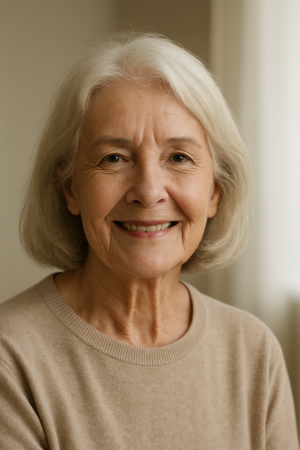
Section 7 The Aging Body and Acceptance
Aging Is Not Error
The body ages by design. Cells slow their repair, joints stiffen, memory edits what it keeps. Yet our culture treats every creak as pathology. Advertisements promise reversal, not relationship.
But one of the deepest lessons in when to do nothing in medicine is that some changes are not to be fought, they’re to be understood.
Aging is not decay; it’s translation. The body speaks the same language, just in a lower register.
The Temptation to Tinker
Medical progress has made miracles routine. But abundance invites overreach. Each new test offers to reveal something “fixable,” and each discovery invites intervention.
A mild arrhythmia gets ablated; a benign lump gets biopsied; a knee with character becomes a knee with hardware. Some of these save lives. Many simply rearrange them.
Wisdom means distinguishing age from illness. It’s saying, “This is wear, not warning.” It’s learning that longevity without serenity isn’t victory.
Dignity as Outcome
When older patients tell me they’re tired of tests, they’re rarely giving up. They’re reclaiming authorship. They’re saying, “I know what matters to me now.”
The physician’s role shifts from engineer to translator, to help them live meaningfully inside the bodies they have, not endlessly pursue the bodies they lost.
Quality of life isn’t measured in lab values; it’s measured in mornings that still feel like yours.
Acceptance as Medicine
Acceptance is not resignation. It’s alignment. It replaces denial with perspective and panic with proportion.
Clinically, it lowers blood pressure, tempers anxiety, and reduces unnecessary interventions. Philosophically, it’s medicine’s return to humanity: the moment we stop fighting time and start conversing with it.
Aging gracefully and practicing gently are twin disciplines. Both rely on the same faith, that enough is still enough.
Medicine’s final virtue, after curiosity and compassion, is humility. The closing reflection explores how humility transforms both doctor and patient, and why, in the end, restraint may be the most advanced technology we have.
Section 8 Reclaiming Medical Humility
Listening Again
After all the scans, screens, and second opinions, medicine always circles back to listening. The body speaks; the physician interprets; time confirms. Everything else is translation.
Humility is the physician’s stethoscope on the unseen, the willingness to say, “I don’t know yet.” That sentence, spoken honestly, has saved more patients than any prescription written in haste.
The Quiet Expertise
Young doctors act. Seasoned doctors discern. The best ones explain their hesitation as part of healing.
In a profession built on precision, restraint may be its highest art. It demands presence, patience, and perspective, the three elements least taught and most tested.
Mastery and Mercy
Every generation rediscovers the same law: the body is wiser than our instruments, and time remains its oldest ally. Mastery without mercy becomes mechanics. Mercy without mastery becomes sentiment. True medicine lives between them.
When to do nothing in medicine is that middle path, a discipline of proportion, a theology of trust. It’s not about withholding help but about choosing the kind that harmonizes rather than overwhelms.
Because sometimes the cure is time.
The medicine is trust.
And the doctor’s role is restraint.
If all this sounds philosophical, it isn’t. These ideas live in the small moments between visits, in the questions we ask and the silences we allow. Here’s how they look in practice.
FAQ – When Should a Doctor Watch and Wait
1. When should a doctor choose to “do nothing”?
When observation is safer than intervention, such as self-limiting infections, mild pain, or stable conditions, waiting allows natural recovery without unnecessary risk. The key is informed monitoring (expert-guided), not neglect.
2. Is “doing nothing” a real medical strategy?
Yes. In medicine, it’s called watchful waiting or conservative management, an evidence-based approach used in pediatrics, oncology, psychiatry, and primary care.
3. How does the body heal on its own?
Through coordinated biological systems—immune, endocrine, and endocannabinoid—that repair tissue, clear infection, and recalibrate balance when given time.
4. What are the risks of over-treating?
Over-treatment increases medication side effects, infection risk, anxiety, and cost, while sometimes causing new chronic problems that didn’t exist before.
5. How can patients know when to wait and when to act?
By communicating openly about symptom severity, function, and risk tolerance. Shared decision-making replaces panic with partnership.
6. What is the role of the endocannabinoid system here?
It exemplifies balance. The ECS helps regulate pain, mood, and inflammation, among other important duties—reminding us that equilibrium, not aggression, is the body’s preferred mode of healing.
7. Does aging change the decision to intervene?
Yes. With age, the cost of intervention rises while benefits narrow. Acceptance and proportion often bring greater comfort than continual repair.
8. Why do doctors overtreat if they know the risks?
Systemic pressure, liability fears, and cultural expectations reward action. Restraint requires courage and supportive policy.
9. Is “less is more” supported by research?
Absolutely. Studies in internal medicine and geriatrics show that minimalist approaches often yield equal or better outcomes with fewer harms.
10. What can patients ask their doctor to encourage restraint?
Questions like “What happens if we wait?” or “What’s the natural course of this?” or “Do I have to research some other ideas or directions?” invite collaboration and reintroduce time as part of therapy.
Miss These Internal Links?
Cannabis-Infused Veggie Stir Fry: A Healthy, High-Fiber, High-Vibe Dinner
Tylenol and Autism: 7 Insights You Need Now
Cannabinoids Against MRSA: 5 Surprising Findings You Should Know
External Links:
‘What happens if I do nothing?’ A Systematic Review
When Doing Nothing is The Best Medicine – New York Times
Wikipedia: The Hippocratic Oath
NEMJ: The Art of Doing Nothing
